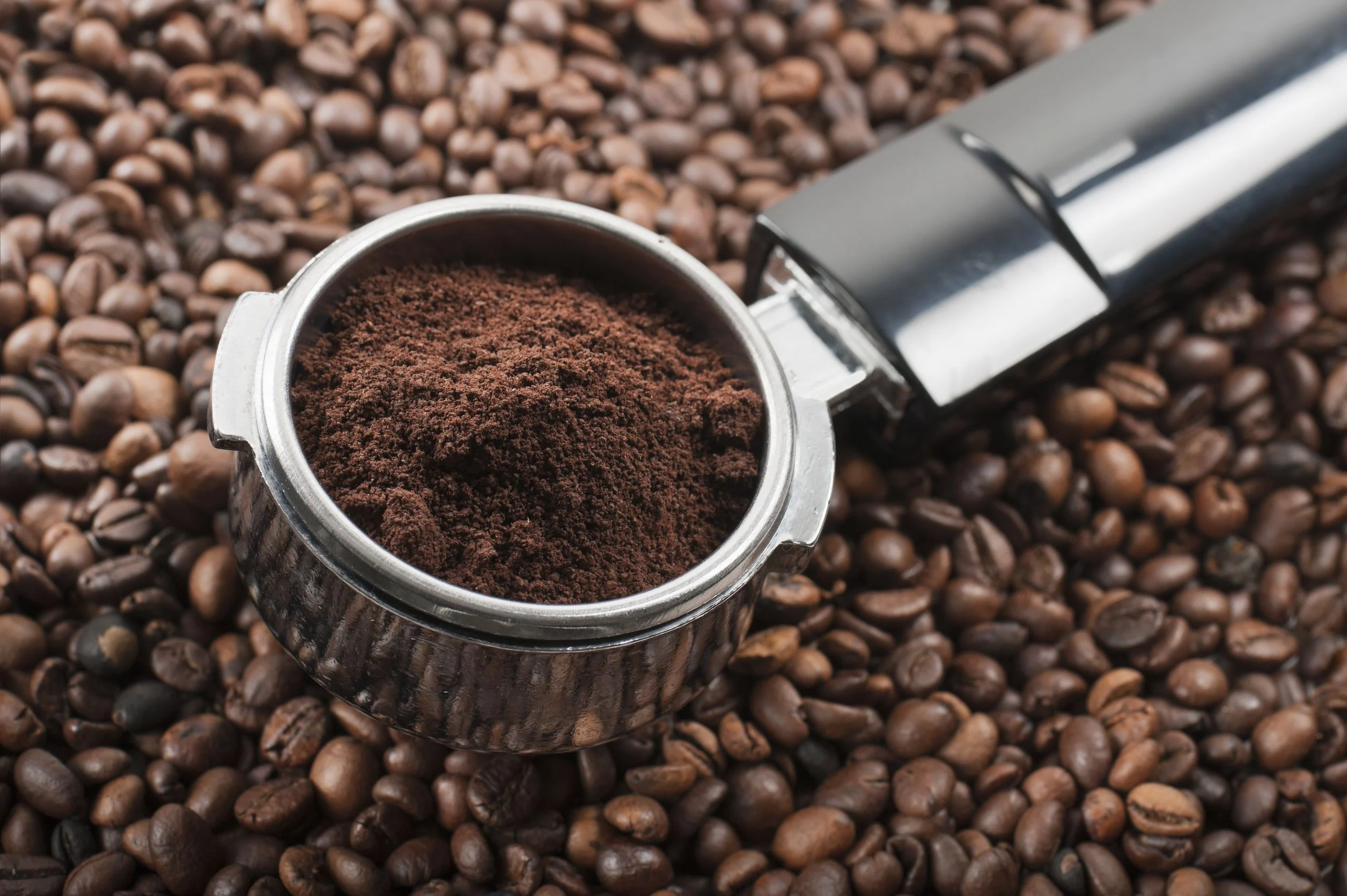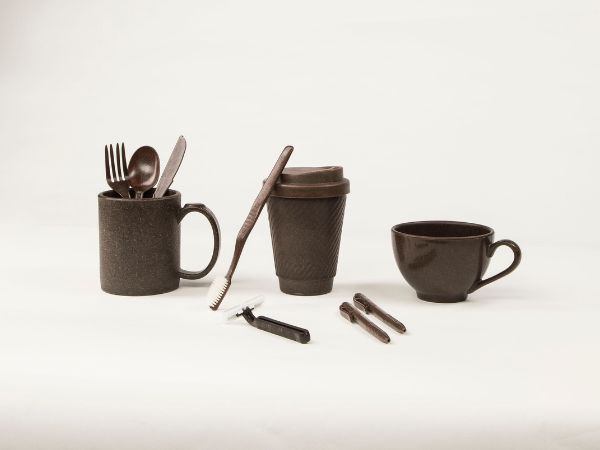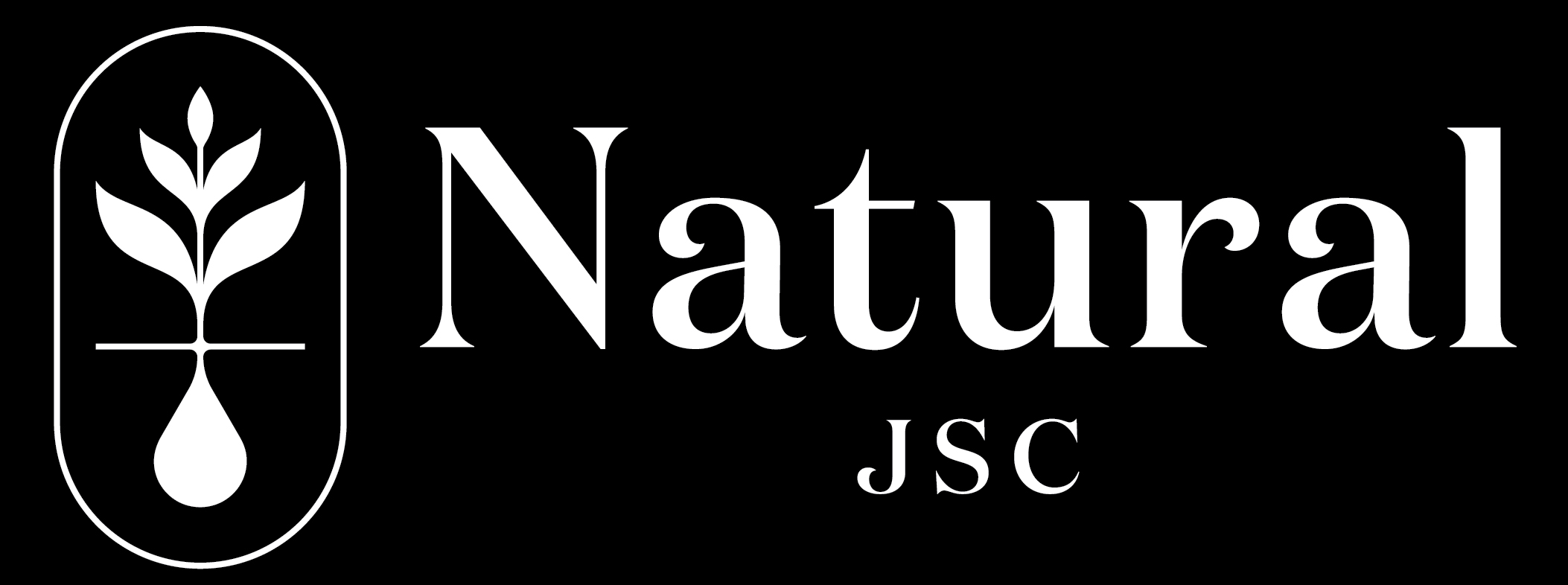Coffee is a familiar beverage in our daily lives. It brings a spirit of excitement to start the day full of vitality. And even when it becomes grounds, coffee can still be used to create products that continue to serve people. Above all, coffee grounds products do not have a negative impact on the environment and are considered one of the leading “green materials” today.
Learn about coffee grounds
Following the standard process, coffee is brewed from coffee grounds by pouring hot water over the grounds and then using a filter or funnel to separate the liquid. The resulting liquid is pure coffee. The powder left after use is coffee grounds. Despite undergoing the filtering process, coffee grounds still retain a certain amount of caffeine and minerals, so they are often used as fertilizer, exfoliants for the skin, or deodorizers.

Why use coffee grounds products?
Recently, we have witnessed the emergence of a wide range of coffee grounds products, widely used in many industries and markets. It is clear that coffee grounds have become one of the leading materials being researched to find a green consumption solution. And coffee has achieved this by fully meeting the requirements of an eco-friendly material.
Utilizing available resources
We do not always make full use of coffee grounds in our daily lives. In fact, the amount of coffee grounds that become waste in the brewing industry alone reaches millions of tons each year. Therefore, recycling coffee grounds and turning them into a green source of raw materials for manufacturing products is extremely important.
By effectively utilizing this available resource, we can reduce the amount of waste released into the environment and alleviate some of the pressure on fossil fuel resources that are gradually depleting. This also helps limit greenhouse gas emissions generated during the extraction and processing of fossil fuels—a major contributor to climate change.
Product diversity
Coffee grounds are a relatively versatile material. Depending on the processing method, we can create completely different types of products. Therefore, coffee grounds are favored by many green businesses spanning industries from restaurants and hotels to fashion, cosmetics, and even interior design and construction.
Health safety
Most products made from bio-based materials do not contain harmful chemicals like BPA or phthalates commonly found in traditional plastic products. Of course, coffee grounds products are no exception. In fact, these products also contain minerals that offer numerous health benefits.
How are coffee grounds products applied in daily life?
The diversity of product segments and options is one of the standout strengths of coffee grounds. Products made from this eco-friendly material are not limited to any specific industry, including key business markets such as:
The fashion industry
Due to its effective odor-eliminating properties, coffee grounds have been utilized by many global fashion brands as fabric for clothing or bags, etc. Among these, S.cafe from Singtex stands out.
S.cafe is a coffee fabric that combines coffee grounds and recycled PET bottles. This brings many environmental benefits as it utilizes available resources and helps reduce PET plastic waste. At the same time, this combination also gives S.cafe fabric excellent odor-eliminating properties, high durability, and a soft, light, and breathable feel.
Interior Design – Construction
By simply mixing coffee grounds with adhesives or bioplastics, we can create a “new material” that can be molded into many useful products. Examples include composite wood panels, wall coverings, and a variety of decorative interior materials. Furniture and architectural products made from coffee grounds retain all the properties of conventional materials, from durability to excellent load-bearing and heat-resistant capabilities. Additionally, these items impress aesthetically with their distinctive coffee-brown color and unique grain patterns.
Household goods

Coffee grounds are also used to produce bio-based biodegradable plastics. This type of plastic is completely biodegradable in the natural environment, breaking down into water, CO2, and minerals to nourish the soil at the end of its life cycle. This means that even though it is plastic, coffee grounds-based bioplastic does not harm the environment like traditional plastic and offers numerous advantages.
Currently, coffee grounds-based bioplastic is commonly used in the production of materials and food packaging such as cups, bowls, straws, etc. Thanks to the emergence of products made from coffee grounds-based bioplastic, the amount of single-use plastic waste has decreased significantly, bringing positive signs for environmental protection campaigns.
Cosmetics and skincare industry
Of course, we cannot overlook one of the most beloved uses of coffee grounds—their excellent exfoliating properties. And it is precisely because of this use that coffee grounds have been incorporated into many natural skincare products from world-renowned brands such as The Body Shop, Frank Body, etc. From exfoliators, masks, lip balms to soaps, coffee grounds can always be perfectly transformed into familiar eco-friendly skincare products to accompany you on your beauty journey.
Conclusion
Not only coffee but also coffee grounds and coffee-based products are becoming increasingly familiar to us. This eco-friendly material helps us move further along the path to a green, clean, and beautiful lifestyle while contributing to building a sustainable living environment. Let’s join coffee-based products in stepping toward a greener future!
